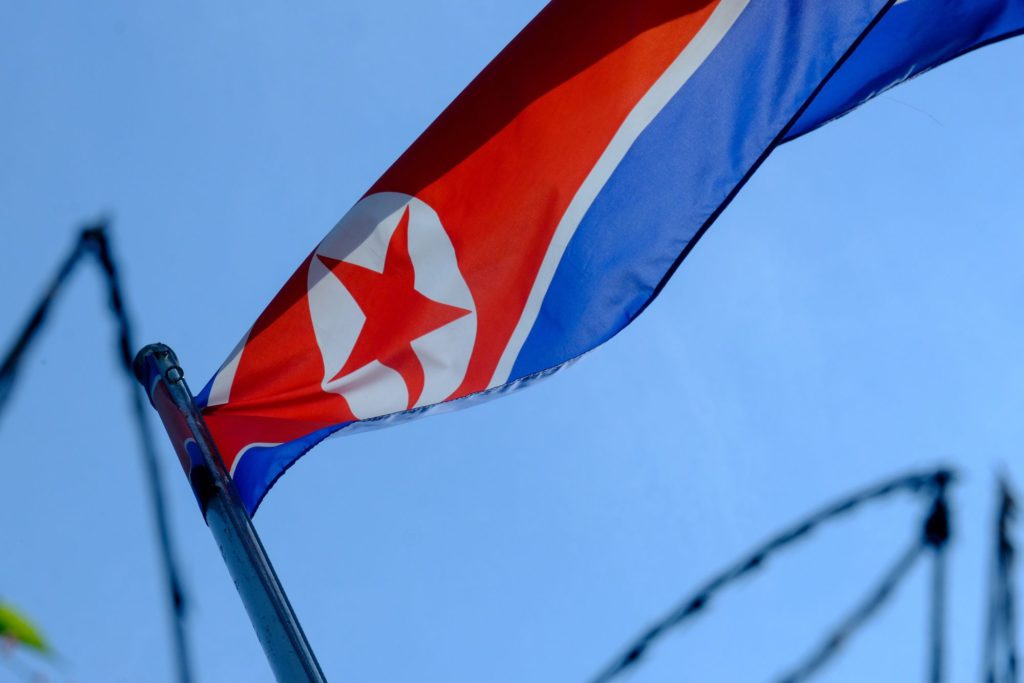(Bloomberg) — North Korea appears to have fired an intercontinental ballistic missile Wednesday in a defiant show of force just hours after US President Joe Biden wrapped up a visit to the region, testing his efforts to strengthen defense ties with South Korea and Japan.
South Korea said a suspected ICBM reached an altitude of about 540 kilometers (335 miles) and traveled a distance of about 360 kms.
The flight was far shorter than its last ICBM test in March of a missile that reached an altitude of 6,200 kilometers and traveled 1,080 kilometers to splash down in the sea west of Japan.
North Korea also fired two shorter-range missiles including one that flew about 760 kilometers and reached an altitude of 60 kilometers, its Joint Chiefs of Staff said.
All three were launched from an area near Pyongyang’s main airport.
The launch of an ICBM, designed to carry a nuclear warhead to the US mainland, would be one of the biggest provocations North Korea has conducted to coincide with a visit by a sitting American president to the region.
The White House said Biden was briefed on the launches.
The US Indo-Pacific Command said in a statement, that “while this event does not pose an immediate threat to US personnel or territory, or to our allies, the missile launches highlights the destabilizing impact of the DPRK’s illicit weapons program,” referring to North Korea by its formal name.
Kim Jong Un has ignored US appeals to return to the negotiating table, and his regime usually doesn’t comment on what it fired until the next day.
The country is barred from ballistic missile launches by United Nations Security Council resolutions.
“Perhaps Kim judged that remaining silent after Biden’s trip to Asia would have been out of character for North Korea,” said Soo Kim, a policy analyst with the Rand Corp.
who previously worked at the Central Intelligence Agency.
“In the face of a successful US-South Korea summit and Washington’s tepidity towards negotiating on Kim’s terms, Kim will continue to show resolve in strengthening and displaying his weapons capabilities,” she said.
Biden and US allies might not have much leverage in trying to slow down the tests or ratchet up global sanctions to punish Pyongyang for its provocations, which could soon include its first nuclear test since 2017.
South Korean deputy security adviser Kim Tae-hyo said Seoul has detected signs its neighbor has been operating a detonation device, which indicates an underground nuclear explosion could be near.
The US push to isolate Russia over Vladimir Putin’s war in Ukraine, coupled with increasing animosity toward China, has allowed Kim to strengthen his nuclear deterrent without fear of facing more sanctions at the UN Security Council.
There’s almost no chance Russia or China, which have veto power at the council, would support any measures against North Korea, as they did in 2017 following a series of weapons tests that prompted then President Donald Trump to warn of “fire and fury.”
China and Russia added to tensions by conducting a military drill Tuesday as Biden finished his trip, sending bombers and other aircraft south of the Korean Peninsula and over waters between Japan and South Korea, Seoul said.
Joint Russia-China Air Drill During Biden Trip Rankles Neighbors
“China and Russia love North Korea’s actions that cause trouble to the South Korea-US-Japan bloc,” said Cheon Seong-whun, a former security strategy secretary for South Korea’s presidential office.
He added Pyongyang may feel it has a green light to press ahead on its nuclear program with Moscow and Beijing using their power to block any new sanctions.
North Korea has been firing missiles at a record pace this year.
It has tested a variety of missiles designed to evade US-operated interceptors and increase the threat of a credible nuclear strike against the US and its allies in Asia.
Kim enacted a self-imposed moratorium on tests of nuclear devices and ICBMs to facilitate talks with Trump in 2018.
The two met three times and their discussions resulted in no tangible steps to wind down Pyongyang’s atomic arsenal — which only grew larger as their talks sputtered.
Biden on Tuesday wrapped up his first trip as president to South Korea and Japan for discussions with the two US allies that host the bulk of American troops in the region.
He and South Korean counterpart Yoon Suk Yeol agreed to start talks on expanding joint military exercises aimed at countering the threat posed by North Korea.
South Korea “strongly condemned” the launch, its presidential office said in a statement while the foreign ministers of Japan and the US spoke by phone and called the move a threat to peace and stability, the Foreign Ministry in Tokyo said.
Kim Jong Un’s ‘Monster’ ICBM Meant to Overwhelm U.S.
Defenses
There was no indication what type of ICBM North Korea fired. South Korea had said its neighbor attempted to shoot its biggest and newest ICBM — a Hwasong-17 — on March 16, which blew up in the skies over Pyongyang shortly after take-off.
Eight days later, it launched a Hwasong-15, last tested in 2017, for a successful flight, Seoul said.
Ahead of Biden’s visit, the US, South Korea and Japan had warned that North Korea was preparing to launch an ICBM.
The three missiles tested Wednesday may have been one that is part of a system to launch warheads from the ICBM, another that was a short-range missile with a maneuverable warhead and a rocket that appears to have failed, said Melissa Hanham, a non-proliferation expert and an affiliate with the Stanford Center for International Security and Cooperation.
(Updates with nuclear test preparation.)
More stories like this are available on bloomberg.com
©2022 Bloomberg L.P.











